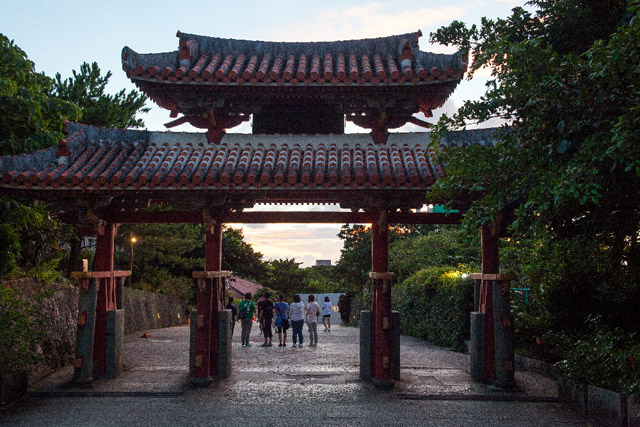
Magnificent in both architecture and history Shurijo Castle is an Okinawa icon and definitely a must not miss stop when visiting the island. Originally built in the late 1300s, the castle has survived numerous wars and fires. The most recent attack on the building was during the 1945 Battle of Okinawa. Since its original formation the caste has been carefully reconstructed and today is listed as one of the country’s most precious UNESCO World Heritage designated Castles.
-
Located in the city of Naha, Shurijo Castle was at the heart of the Ryukyu Kingdom, an independent kingdom that ruled a majority of the Ryukyu Islands from the 15th to the 19th century.
![Shurijo Castle]()
Shurijo Castle
In 1945 during WWII bombing, every inch of the building was destroyed, so what you see today is actually a meticulously built reconstruction of the building. As well as being a political and administrative hub during the Ryukyu Kingdom era, the castle was also the residence for Ryukyu kings until Okinawa became a Japanese prefecture in 1879. Its fascinating design reflects a hybrid of both Chinese and Japanese influence, from its glowing red exterior and elaborate gates to its delicately crafted unique stonework.
![Shurijo Castle]()
Shurijo Castle
Arguably the centerpiece however of this local landmark is the Shurei Gate, which was reconstructed in 1958. The gate boasts fiery red tiles set in white lime, capturing a beauty unique to Okinawa’s surroundings.
![]()
The caste itself is very much open to the public, however it is separated into two admission areas, a paid area and a free one. The free area is limited to the outside of the building meaning you can walk around, inspect the grounds and admire the castle’s breathtaking architecture. If you don’t have a lot of time, it’s worth still exploring the castle from the outside because there’s plenty to see and do. Once you enter the front gate, also known as the Kankaimon Gate, you can wander through and visit the Ryuhi water spring, Suimui Utaki, one of the castle’s major homes of worship and the Iri-no-Azana an observation deck located on the west-side of the castle walls.
![Shurijo Castle]()
Shurijo Castle
For those wanting a more in-depth experience of the history of Shurijo Castle, it’s worth paying for admission. For adults admission fee is 820 yen, 660 yen for high school age children and for elementary and junior high age visitors the fee is 310 yen. For those who fall for the Shurijo castle’s magic, and want to make multiple pilgrimages you can purchase a yearly passport for 1640 yen. Once inside you’re free to explore what daily life in the Ryukyu royal inner-circle would have looked like. Visitors are allowed access to the castle’s common rooms and the chance to get up close and personal with a close to detail reconstruction of the throne used by King Sho Shin, who ruled from 1477 to 1526. Allow some time because it’s easy to lose two to three hours getting swept up in the rich history and art of the building.
![Shurijo Castle]()
Shurijo Castle
The castle opens at 8:30am and shuts between 6pm - 8pm depending on the time of year, the later access happens during the warmer and more tourist heavy months of July and September. To get there by bus catch the number 7 or 8 and get off at Shurijo-mae stop which will take about five minutes and cost 150 yen each way. The alternative bus route is via number 1 bus directly from central Naha (Kokusaidori) to Shurijo Castle, at Shurijo Koen Iriguchi stop, this trip will take about 15-20 minutes and costs 230 yen. Alternatively you can make the 15-20 minute walk from Shurijo Station quite easily.
- Shurijo Castle Park (Shurijo Castle)
-
4.0
205 Reviews -
-
- Okinawa Pref. Nahashi Shurikinjouchou 1-2
-
-
-
- 0988862020
-
-
-
- [Open Hours (open everyday f…
-
View AllShurijo Castle Park Paid Area Admission in Naha
¥400
Update date:2024/04/24






 Go here
Go here





